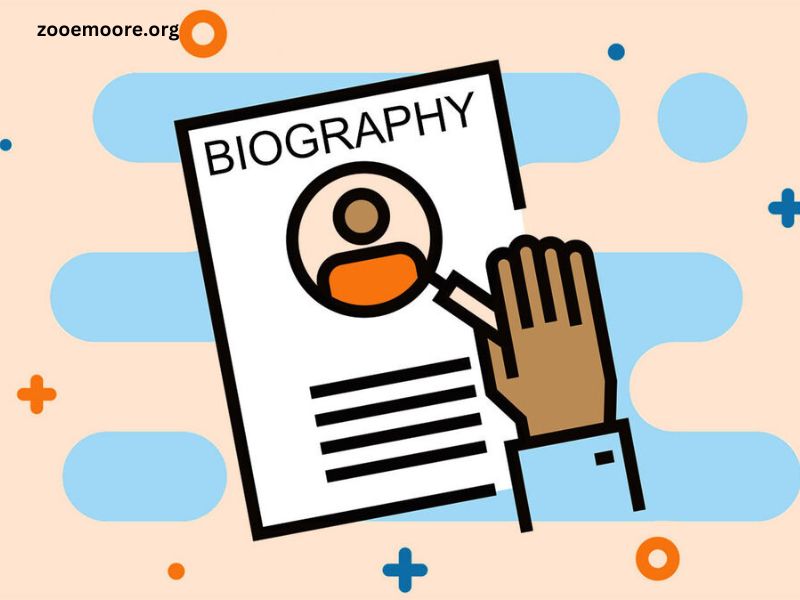A biography is a detailed account of a person’s life, exploring their experiences, achievements, and personal background. Unlike autobiographies, which are written by the subjects themselves, biographies are crafted by authors who study and analyze their subjects from an external perspective. This form of literature serves both educational and entertainment purposes, offering readers insights into the lives of notable individuals, historical figures, or even ordinary people whose stories are compelling or inspirational.
The Essence of Biography
A biography is more than just a collection of dates and events; it provides a narrative that seeks to capture the essence of its subject. It encompasses various elements, including the person’s background, significant life events, relationships, and the impact they had on the world. The goal is to create a comprehensive and engaging portrait that allows readers to understand the individual’s motivations, struggles, and triumphs.
Components of a Biography
- Introduction: The introduction sets the stage for the biography, providing a brief overview of the subject’s significance and what the reader can expect to learn. It often includes a thesis statement that encapsulates the main theme or focus of the biography.
- Early Life: This section delves into the subject’s formative years, including their family background, childhood experiences, and education. It explores how these early influences shaped their personality and future endeavors.
- Career and Achievements: Here, the biography covers the subject’s professional journey, highlighting major accomplishments, milestones, and contributions to their field. This section may also address the challenges they faced and how they overcame them.
- Personal Life: This part of the biography provides insights into the subject’s personal relationships, including family, friends, and significant others. It often explores how these relationships impacted their life and work.
- Legacy and Impact: The final section of a biography examines the subject’s lasting influence on their field, society, or the world at large. It assesses how their actions and achievements have been remembered and celebrated over time.
- Conclusion: The conclusion summarizes the main points of the biography and reflects on the overall significance of the subject’s life. It often provides final thoughts on their legacy and the lessons that can be learned from their experiences.
Types of Biographies
Biographies can vary widely depending on their subject matter, purpose, and style. Here are some common types:
- Authorized Biography: Written with the permission and cooperation of the subject or their estate, authorized biographies often provide a more detailed and favorable portrayal. They may include exclusive interviews and access to personal documents.
- Unauthorized Biography: These biographies are written without the subject’s permission and may sometimes include controversial or critical perspectives. They are often based on publicly available information and interviews with people close to the subject.
- Autobiography: Unlike traditional biographies, autobiographies are written by the subjects themselves. They offer a first-person perspective on the individual’s life, providing personal insights and reflections that are often more intimate and subjective.
- Memoir: A memoir is a specific type of autobiography that focuses on a particular period or theme in the author’s life, rather than providing a comprehensive account of their entire life. Memoirs often explore personal experiences, emotions, and reflections in depth.
- Historical Biography: This genre focuses on historical figures and events, offering detailed accounts of their lives and the contexts in which they lived. Historical biographies often require extensive research and analysis to accurately depict the time period and its impact on the subject.
- Celebrity Biography: Centered around famous individuals in the entertainment industry, sports, or other public spheres, celebrity biographies often explore the subject’s rise to fame, personal challenges, and public image.
Writing a Biography
Writing a biography involves meticulous research, thoughtful analysis, and careful crafting of narrative. Here are some key steps in the process:
- Research: The first step in writing a biography is conducting thorough research. This includes reading primary sources such as letters, diaries, and autobiographies, as well as secondary sources like books, articles, and interviews. The goal is to gather a comprehensive understanding of the subject’s life and context.
- Planning and Organization: Once the research is complete, the writer must organize the information into a coherent structure. This involves creating an outline that covers the key aspects of the subject’s life and deciding on the narrative approach.
- Writing: With the outline in place, the writer begins drafting the biography. This involves crafting engaging prose that brings the subject’s story to life. The writer must balance factual accuracy with narrative flair, ensuring that the biography is both informative and captivating.
- Revising and Editing: After completing the first draft, the writer revises and edits the manuscript to improve clarity, coherence, and accuracy. This may involve fact-checking, restructuring sections, and refining the language.
- Publishing: Once the biography is polished, it is ready for publication. This may involve working with literary agents, publishers, or self-publishing platforms. The final product can take the form of a book, article, or digital content.
The Role of Biography in Society
Biographies play a crucial role in society by preserving and sharing the stories of individuals who have made significant contributions to various fields. They offer readers the opportunity to learn from the experiences of others, gain inspiration, and develop a deeper understanding of human nature.
- Education: Biographies serve as educational tools, providing insights into historical events, cultural contexts, and the lives of influential figures. They help students and readers alike to learn about history, politics, science, and the arts through the lens of individual experiences.
- Inspiration: By showcasing the achievements and struggles of notable individuals, biographies inspire readers to pursue their own goals and overcome obstacles. They highlight the resilience, creativity, and determination that can lead to success.
- Cultural Preservation: Biographies contribute to the preservation of cultural heritage by documenting the lives of individuals who have shaped society. They ensure that the stories of diverse people and their contributions are remembered and celebrated.
- Entertainment: In addition to their educational and inspirational value, biographies also provide entertainment. Engaging narratives and compelling stories captivate readers and offer an enjoyable reading experience.
Conclusion
A biography is a rich and multifaceted genre that offers readers a window into the lives of others. By exploring the experiences, achievements, and personal stories of individuals, biographies provide valuable insights and lessons that resonate across time and space. Whether through authorized accounts, memoirs, or historical narratives, biographies play an essential role in documenting and celebrating human experiences, making them a vital part of literature and education.



